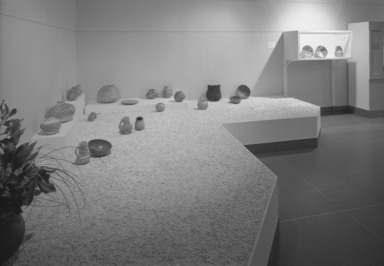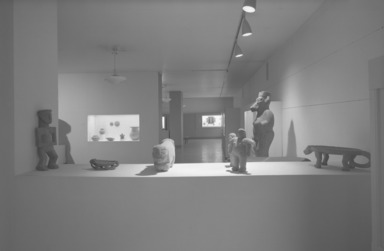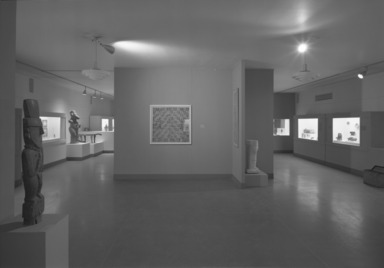

Ancient Art of the Americas, December 01, 1959 through January 03, 1960 (Image: PHO_E1959i034.jpg Brooklyn Museum photograph, 1959)

Ancient Art of the Americas, December 01, 1959 through January 03, 1960 (Image: PHO_E1959i035.jpg Brooklyn Museum photograph, 1959)

Ancient Art of the Americas, December 01, 1959 through January 03, 1960 (Image: PHO_E1959i036.jpg Brooklyn Museum photograph, 1959)

Ancient Art of the Americas, December 01, 1959 through January 03, 1960 (Image: PHO_E1959i037.jpg Brooklyn Museum photograph, 1959)

Ancient Art of the Americas, December 01, 1959 through January 03, 1960 (Image: PHO_E1959i038.jpg Brooklyn Museum photograph, 1959)

Ancient Art of the Americas, December 01, 1959 through January 03, 1960 (Image: PHO_E1959i039.jpg Brooklyn Museum photograph, 1959)

Ancient Art of the Americas, December 01, 1959 through January 03, 1960 (Image: PHO_E1959i040.jpg Brooklyn Museum photograph, 1959)

Ancient Art of the Americas, December 01, 1959 through January 03, 1960 (Image: PHO_E1959i041.jpg Brooklyn Museum photograph, 1959)

Ancient Art of the Americas, December 01, 1959 through January 03, 1960 (Image: PHO_E1959i042.jpg Brooklyn Museum photograph, 1959)

Ancient Art of the Americas, December 01, 1959 through January 03, 1960 (Image: PHO_E1959i043.jpg Brooklyn Museum photograph, 1959)

Ancient Art of the Americas, December 01, 1959 through January 03, 1960 (Image: PHO_E1959i044.jpg Brooklyn Museum photograph, 1959)

Ancient Art of the Americas, December 01, 1959 through January 03, 1960 (Image: PHO_E1959i045.jpg Brooklyn Museum photograph, 1959)
Ancient Art of the Americas
-
November 23, 1959
EXHIBITION OF PRE-COLUMBIAN ART ON DISPLAY FOR LIMITED PERIOD OF FIVE WEEKS
On Tuesday, December 1st, the Brooklyn Museum opens an unusual showing of ANCIENT ART OF THE AMERICAS, a presentation of the carvings, ceramics, textiles and ornaments of the primitives from the Arctic to the Argentine. This extraordinary collectIon of the early cultures of the Western Hemisphere represents the first time that a special exhibition, devoted solely to pre-Columblan art, has shown all the basic art styles of the Americas.
More than three hundred rare examples in gold, jade, stone and clay, from 1500 B.C. to the time of the European conquest of the Americas, were collected from many museums and private collections by Jane Powell, Assistant Curator of Primitive Art and New World Cultures at the Brooklyn Museum. Completing the colorful displays in the Special Exhibitions Gallery on the main floor of the Museum, Miss Powell observed, “This show has a wealth of material for everyone interested in the history, the rellgion, the survival as well as the art of the People who lived in the Americas before Columbus.”
To illustrate the wide public appeal of the Exhibition, Miss Powell noted that the large and varied selection includes the renowned Aztec Death Goddess and a Toltec stone sculpture on loan from the Museo Nacional de Antropologia of Mexico, gold masks and ornaments of Costa Rica and Colombia, bone and ivory carvings of the Neo-eskimo period of the Far North, Peruvian textile and ceramics, polished stone carvings of the spirit images of the Caribbean, and the monumental burial urns of the areas known today as Brazil and Argentina, all predating the European conquest.
Unlike most art of today, the arts of the pre-Columbians was not derived from influences and ideas of other regions or races. Since it has been generally agreed that the Americas were settled by men who crossed the Bering Sea from Asia at the time of the Glacial Age, twenty five thousand years ago, the art of those primitives must have been created out of their own basic and spiritual needs, and the natural resources of the vast and unconquered areas of the Americas.
Rich deposits of gold, chiefly in the regions of Costa Rica, Colombia and Panama, were often cast into objects for burial with the dead, signifying the importance and elaborateness of their burial rituals. In those gold-rich areas, particularly in Panama, a weird array of supernatural beings, involved with ritual and myth, were wrought in gold in decorative styles which were unequalled anywhere else in pre-Columbian art. In the Brooklyn Exhibition, one of the most striking examples of the many gold objects on dIsplay is the monster god, embossed on a golden plaque, typical of the many weird creatures in the early art of the Panamas.
Another outstanding ritualistic figure in the show is the great Olmec god from the jungles of southern Mexico. This treasured sculpture carved in jade in 600 B.C., is a classic example of the technical competence and sophisticated ideas projected by those living in the rain forests. The God exemplifies the simple and extraordinarily powerful art of the Olmecs, a culture that was like no other, with a vitality that reached into far distant regions and became a guiding force in the development of the art of Central America.
The old Bering Sea artists were not such fine sculptors, but they engraved animal figures and winged objects of bone and ivory with rich decorative motifs. Most of the early carvings of the Far North are irrecoverably lost, but a few rare examples of the Arctic’s first craftsmen contribute to the total picture of the Exhibition. The artists of the Far North were as devoted as the others of the Americas in creating offerings to the dead, but there are only a few remaining carvings, depicting the fears and supernatural beliefs of the race that existed along the Arctic coast.
But along the Caribbean a few ancestral spirits, carved in stone, have remained through time and they are among the figures in the Exhibition. They are the spirit stones, images of supernatural and ancestor spirits that conferred power on the individual who was in possession of them. The practical theory has been handed down that it was the Caribbean chiefs who possessed the greater number of the spirit stones.
Climactically, towering above all other rarities in this major Exhibition is the burial urn from the region now known as Brazil. It is one of the effigy type, discovered on an earthen mound along the Amazon, with crude representations of human figures and decorated with geometric and highly stylized animal designs painted in red, brown and white.
The amazing variety of the purposes, methods and materials used in the splendor of pre-Columbian art is totally evident in the comprehensive ANCIENT ART OF THE AMERICAS, an Exhibition which engraves the impression that art was a more important and motivating force of life in the ancient Americas than it is in the same countries today.
A special preview of the Exhibition for members of the Museum and their guests, and for members of the press, will be held on Monday evening, November 30th, from 9 to 11. On Tuesday December 1st through January 3rd this showing of ANCIENT ART OF THE AMERICAS will open to the public at the Brooklyn Museum.
PRESS MAY VIEW THE SHOW AT ANYTIME ON MONDAY, NOVEMBER 30.
Brooklyn Museum Archives. Records of the Department of Public Information. Press releases, 1953 - 1970. 1959, 057-60.
View Original

